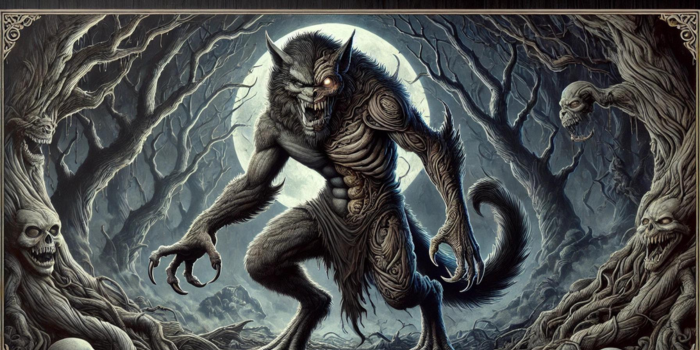
Aswang in Filipino Mythology: Myths, Realities, and Rituals
|
|
Time to read 7 min
|
|
Time to read 7 min
The Aswang, a fearsome creature from Filipino folklore, is known for its ability to shape-shift and its taste for human flesh. This nocturnal entity embodies themes of fear, deception, and the supernatural. Tales of the Aswang have been passed down through generations, serving as cautionary stories and highlighting the darker aspects of the human psyche and the natural world.
Unlock the Mysteries of the Ars Goetia with a Free Oracle Tarot Reading , performed by the most experienced masters of Terra Incognita . This powerful reading is not a game—it is a serious and profound spiritual tool designed to provide clarity, guidance, and transformation. Only sincere requests are taken into consideration, ensuring that each reading is handled with the utmost dedication and expertise. Your personalized results will be delivered within 48 hours , offering you the wisdom and insight you seek.
👉 Submit your request here: Free Ars Goetia Oracle Tarot Reading
Are you ready to uncover the answers hidden within the shadows?
Connecting with the Aswang involves understanding its dual nature of transformation and predation. To attune to this powerful entity, one might:
Connecting with the Aswang requires a recognition of the balance between predation and protection. Practitioners might also engage in activities that emphasize survival and cunning, such as wilderness training, strategic games, or studying folklore and myth.
The Aswang is often associated with the planet Mars. Mars, known for its connection to war, aggression, and survival, mirrors the Aswang's predatory and violent aspects. This planetary association underscores themes of strength, conflict, and the primal instincts of survival, highlighting the Aswang's role as a fierce and formidable entity.
Iron is the metal most closely linked to the Aswang. Known for its strength and protective properties, iron symbolizes defense, resilience, and endurance. Using iron items in rituals, such as iron knives or amulets, can help strengthen the connection to the Aswang and provide protection. Additionally, iron's historical use in warding off malevolent spirits underscores its significance in folklore.
The element of the Aswang is Earth, representing its connection to the physical world and its predatory nature. Earth symbolizes both life and decay, aligning with the Aswang's ability to bring death and consume flesh. Earth rituals, such as burying protective talismans or using soil and herbs in ceremonies, are ways to honor the Aswang and invoke its energy. The grounding properties of earth also mirror the Aswang's role as a creature deeply connected to the land and its primal instincts.
The Aswang is associated with the astrological sign of Scorpio. Scorpio, ruled by Pluto and Mars, shares the Aswang's attributes of intensity, transformation, and mystery. The passionate and enigmatic nature of Scorpio aligns with the Aswang's spirit and its role as a shape-shifting predator. Scorpio's connection to power, rebirth, and the darker aspects of the psyche also reflects the Aswang's ability to transform and adapt, embodying the cycle of life and death.
Offerings to the Aswang can include:
These offerings not only honor the Aswang but also invite its presence and blessings into one's life. Engaging in acts of protection and survival can be a powerful way to connect with its formidable energy.
The Aswang shares relationships with several other figures in Filipino folklore and mythology:
The Aswang has been a significant figure in Filipino culture, influencing folklore, literature, and art. It is often depicted in stories, films, and paintings as a shape-shifting monster that preys on humans, symbolizing the darker aspects of the human psyche and the natural world. The Aswang's story has inspired numerous adaptations and interpretations, reflecting its enduring appeal and complexity. In modern culture, the Aswang is often portrayed as a symbol of fear and the unknown, embodying the primal instincts of survival and predation.
The Aswang has appeared in various movies and TV shows, often depicted as a terrifying and shape-shifting creature. Notable portrayals include:
The Aswang is a prominent figure in literature, especially in works exploring Filipino mythology and supernatural themes. Noteworthy mentions include:
Despite its significant role, several misconceptions surround the Aswang:
Demon and Spirit Attunements, Amulets, and Grimoires are potent spiritual tools crafted to align your energy with powerful entities, offering protection, guidance, and healing. These sacred items bridge the gap between the earthly and spiritual realms, enabling you to connect with higher forces for clarity, empowerment, and inner strength. By wearing a demon or spirit amulet or engaging with a grimoire, you invite these potent energies into your life, providing ongoing support and shielding against negativity.
Demon and Spirit Attunements work to fine-tune your spiritual vibrations, enhancing your connection with specific entities and boosting your intuitive abilities. These practices create a comprehensive spiritual approach that not only protects you from harm but also opens pathways to profound transformation, spiritual growth, and inner wisdom. Through these tools, you harness the ancient powers of demons and spirits, forging a path toward deeper understanding and personal empowerment.